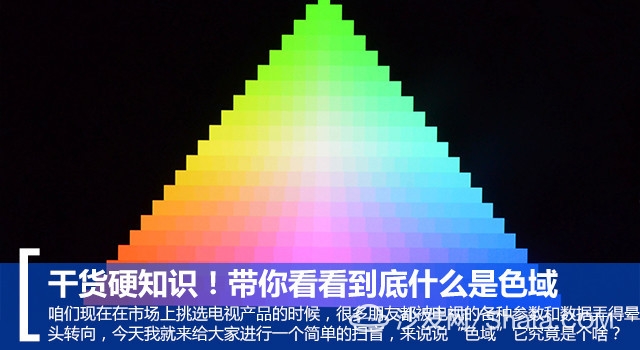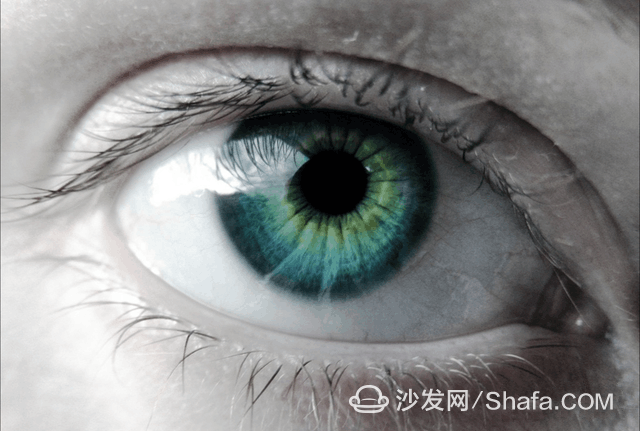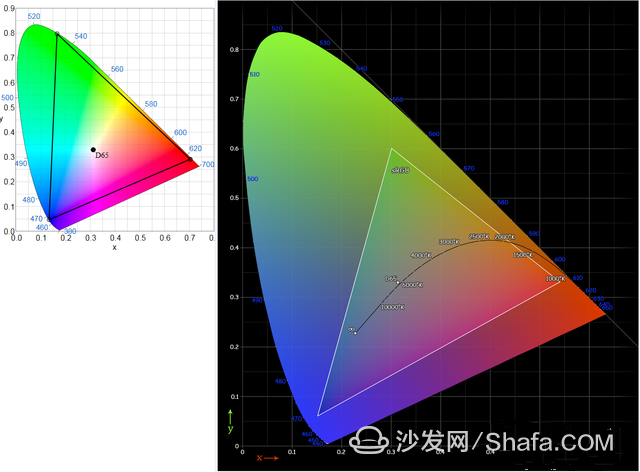If you ask the most concerned electronic products now, everyone will think of mobile phones as their first choice, followed by television products. Now that we have selected TV products in the market, many of our friends have been given various parameters of television. With the data getting confused, today I came to give you a simple literacy and talk about a very important parameter of the TV product: color gamut, it is exactly what.
Since we talked about the color gamut, we have a part of our body. We must first talk about it. That is the eye. The human eye is an organ that responds to light and has many uses. As a conscious sensory organ, the eye has vision. The rod cells and cone cells in the retina possess a sense of light and vision including color differentiation and depth perception. The human eye can distinguish between 10 million colors.
Human eye
Then why do people see things? We know that no matter what medium, what constitutes, or even the molecular structure of any object, as long as it is a visible object, it must be reflective. After the light enters the human eye through the reflection of the object, it is The brain processes to image in our consciousness. We can conclude now that if the object is completely transparent without impurities, or it is completely non-reflective, it cannot be seen by the human eye. Of course, there is another situation, which is related to our topic today. spectrum.
The so-called spectrum: in simple terms is the complex color light through the prism after the separation of objects like objects, the color of the monochromatic light is dispersed by wavelength, followed by row of colored light, its full name is called "optical spectrum." The largest portion of the visible spectrum in the spectrum is visible to the human eye in electromagnetic waves. Electromagnetic radiation in this wavelength range is called visible light.
spectrum
Visible light and invisible light are actually well understood. We don't need to break the casserole as much as a scientist. The simplest way to remember is that visible light is light, and invisible light is an outside light. For example, infrared light and ultraviolet light are invisible lights. Although this understanding is not the most correct, it is indeed the most simple and easy to understand. In short, it is not necessary to go as far as scientists to investigate. We do not mainly talk about this today, as long as we simply understand it.
Visible light distribution
The above picture is a simple visible light distribution diagram. The light is broken down. In the middle, the part that can be directly recognized by the human eye is the visible light part (also visible in the eye, but not in the spectrum, such as pink and brown. ), and beyond the human eye to identify the purple exterior is ultraviolet light, on the contrary beyond the human eye to identify the red part of the infrared, outside there are, for example, microwaves, and radar waves are also invisible light, well, we have done so With so much to do, it's time to talk about today's protagonist "color gamut." Please don't worry, look down slowly.
We usually have many names for color space, I believe you have seen it in different places. Color gamut, you can define it as a standard, it can be regarded as a hard indicator, but such a hard indicator is not simply higher and better, now many consumers misinterpret the meaning of color gamut, this color The domain is not simply a standard. It is the collective name for many standards.
Multiple color gamut standards
We can see in many places, the three letters of RGB, then what exactly does RGB represent? R is Red Red, G is Green Green, and B is Blue Blue. We can see that the above figure can be abbreviated For the color gamut diagram, RGB represents the three colors in the corner. This map evolved from the spectrum. The area in the middle is the visible light range of the human eye, and the color gamut is a general term for this range.
Comparison between sRGB color standard and D65 color standard
Due to the bottleneck of current technology, current display devices cannot completely cover all our visible light color ranges, so there are various color gamut standards. For example, sRGB is a color accuracy defined by manufacturers such as Microsoft and Hewlett-Packard. The color gamut standard provides a standard way to define colors so that various computer peripherals and applications such as display, print, and scan have a common language for color.
There are color differences even with monitors of the same brand.
When color becomes an important part of critical information, the role of color becomes even more negligible. For example: When you buy clothes on Taobao, you need to have a true, accurate color reproduction, and can not have color. sRGB eliminates the difference in color reproduction of different display systems.
LCD color difference comparison
The RGB color between different display devices naturally changes, so that after different display devices, the colors cannot be correctly reproduced. Today, with computer-centric demonstration devices becoming more and more critical tools for market development, correct image and color reproduction has become more important than ever. Now that the sRGB standard is in place, users can be sure that they get relatively uniform colors regardless of their viewing on a variety of display devices.
We use sRGB as an example, just because this color gamut is very popular and is currently an indicator of the color standard of a display device, but the coverage of sRGB on the overall color gamut map is not like the area of ​​some other standard. As large as it is, it is just a color gamut standard that is now recognized by everyone as a true reduction of the true color of objects.
TV products need more gorgeous colors brought by high color gamut display
In summary, the color gamut values ​​we now refer to as TV and monitor products are measured according to one of the above criteria. For example, the color gamut of a product is 105% coverage of sRGB, which is roughly the same as this. The color gamut of the product is 5% larger than the sRGB standard in the color gamut of the sRGB standard color gamut.
Article summary:
So is it not better that the color gamut of a display device is bigger? Through the above explanation we also come to sum up briefly. Too rich colors actually do not have too much benefit to the color reproduction of the display device, but they are more able to please the eyeballs and make the imaging of the display device more beautiful. In terms of professional display devices used for designing graphics, the display is Image color reproduction has higher requirements, but for TV products that mainly watch shows, the richer color gamut can directly improve the viewing enjoyment of users, so the gamut is not as rich as possible, and for users, When selecting devices such as TVs and monitors, select the display device that suits your needs.
Cummins Generator,Cummins Engine Diesel Generator,Cummins Diesel Generator,Cummins Power Generation









